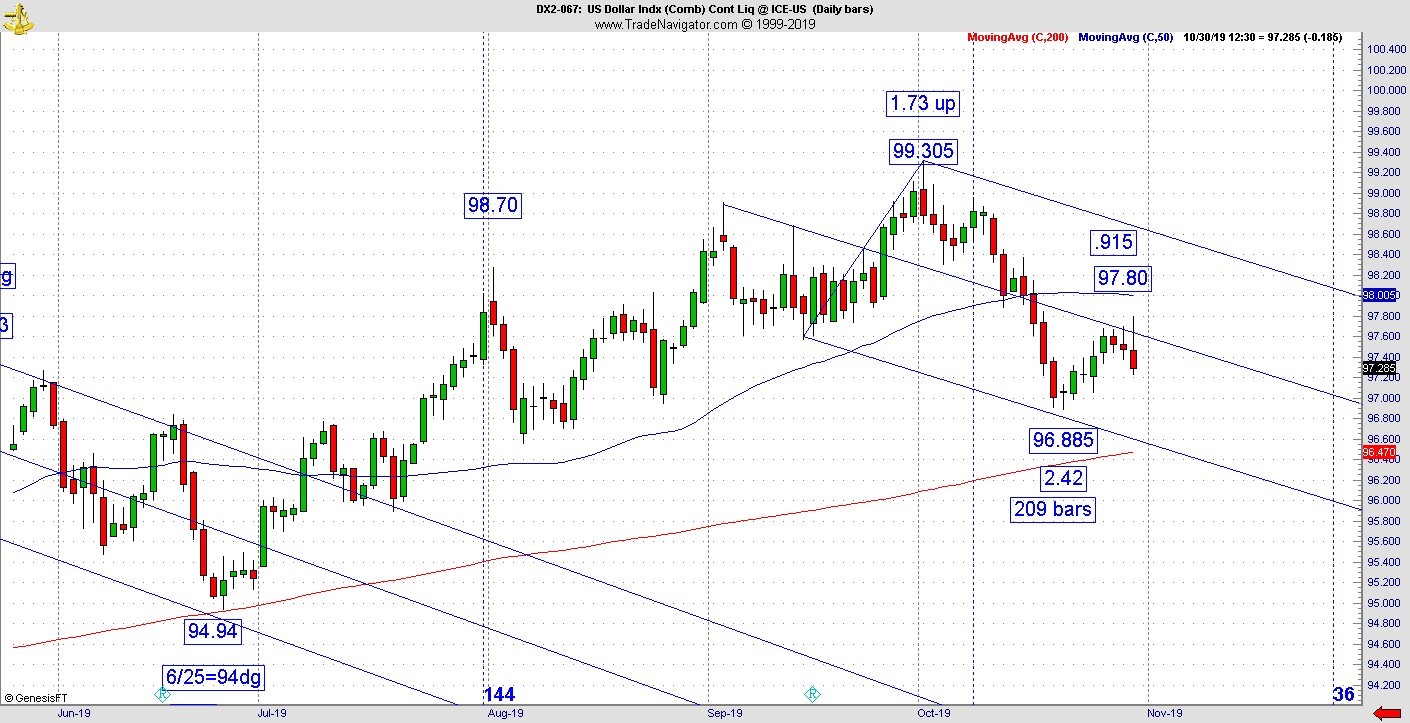Fed Chair Powell sure made it sound like the Fed was done cutting for the year. However, they will continue to buy T-Bills, warns Jeff Greenblatt.
While the Federal Reserve’s Open Markets Committee (FOMC) voted for its third consecutive 25-bais-point easing of Fed Funds on Wednesday, Chair Jay Powell made clear that the current easing cycle (or mid-cycle adjustment) is over, unless something goes terribly wrong.
The Fed statement noted: “The Committee will continue to monitor the implications of incoming information for the economic outlook as it assesses the appropriate path of the target range for the federal funds rate.”
Of course, they maintain a view of continued moderate growth. If that outlook changes, they will reassess the situation. What that means is they can lower rates again on any weakness—but not on the perceived strength they have been touting in recent meetings.
But Powell reiterated something he said earlier in the month. Repo actions will now continue through early January which has been reported by numerous sources. It has been stated by numerous sources that figure runs about $120 billion a night. Since they started this action around six weeks ago. If the figure was $75 billion a night, they will have injected over $2 trillion into the system already, which is three times the amount of the Troubled Asset Relief Program (TARP) following the 2008 credit crisis. But this action will likely continue another six weeks, which means the grand total is going to come in over $4 trillion. Powell told the press this was about establishing a decent reserve ratio for banks. But a banking system that requires an injection of $100 billion or more each night has to be a major red flag.
Powell continues to tell us the stated goal is to sustain the economic expansion even as it removed that phrase this time. It doesn’t matter what they say, the real question is where would the stock market be without this unprecedented and historic move to keep the overnight rates at 2% as opposed to the 10% when this operation started?
The bottom line is it is highly likely the new trend in the dollar we’ve been talking about all month is about to get a fresh leg down. It had a good reading at the low and hit the target of the channel midline and left an upper tail for the day (see chart). One of the key beneficiaries on the day was precious metals, which did the polar opposite of the Greenback. It left a lower tail.

Let’s go back a year. At this time a year ago the 2018 correction hit for the fourth quarter. At that time, we were looking at some longer-term cycles maturing. The question people like Peter Eliades and others including myself were considering, was how the longer-term cycles would interact with the most favorable part of the presidential cycle. The answer was initially down, but it recovered into the end of the “sell in May and go away” time period.
Some markets hit new highs in July while others are hitting marginal highs now. There is a mild divergence between the Dow Jones and S&P 500. There is also a minor divergence with the Nasdaq 100 and Nasdaq Composite. The reality of the situation is the stock market has been in a trading range for months. Even if it goes higher for a season, we are now on the downside of the four-year cycle. From The Dollar Crisis by Richard Duncan we learned governments have the power to postpone the day of reckoning even for years.
The view here is the U.S. Dollar Index has topped. A massive injection each night can’t help. There are two strategies, one for traders and the other for longer term investors. If you are a longer-term investor, even if the market keeps going, the wealth effect will not be there if the Greenback continues to drop. The problem is the profits will only be on paper. I’ve never written about this before, but it appears more prudent for longer term investors to be engaged in something tangible like a commodity such as precious metals. For people who trade for income, you should be fine as the idea is to work at keeping up with the liquidity crunch which the Fed is attempting to solve. Trading stocks is a very good strategy if you know what you are doing, investing for the longer term right now is not.
For now, the stock market is hanging on despite the fact we don’t know when the Fed will cut rates again. That’s mildly bullish. It’s also bullish we’ve survived through September and October without a significant market event. Very soon we’ll enter the bullish season for stocks, it will be the Santa season before we know it. While we could get a shake of the trees, odds have increased substantially the Fed has kicked the can down the road into 2020.
If you want more information, go to: Lucaswaveinternational.com and sign up for the free newsletter.





















